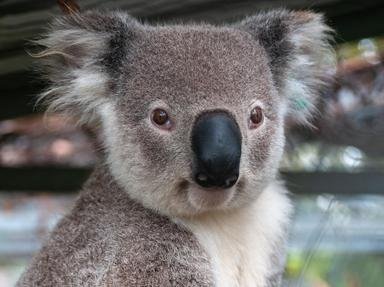Quiz Answer Key and Fun Facts
1. In which Australian state was the cane toad first introduced?
2. To which region are cane toads native?
3. What is the cane toad's scientific name?
4. As adults, cane toads are most active during warm weather. At what time is this activity concentrated?
5. Cane toads are poisonous. Where is this poison concentrated?
6. What Australian pest were cane toads introduced to control?
7. Why is the presence of the cane toad such a problem for the Australian environment?
8. While cane toads are poisonous, some Australian animals can eat them without apparently suffering any ill-effects. Which one of the the following can do this?
9. Cane toad venom has been reportedly used as a dental anaesthetic.
10. A method of cane toad control in Australia is urgently needed. Which of the following methods has been suggested?
Source: Author
NatalieW
This quiz was reviewed by FunTrivia editor
crisw before going online.
Any errors found in FunTrivia content are routinely corrected through our feedback system.

